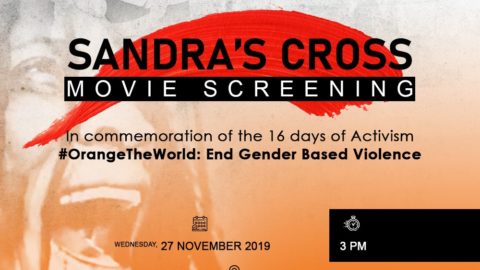In the past 2 weeks, I have written about numbers. First I wrote about the number of the dead in Nigeria and then about the numbers in development indexes. This week, I will return to counting the dead in Nigeria; but I would first like to draw your attention to the misleading tendencies of statistics in Africa. Here is a good example: in 2010, Ghana moved itself forward from a low-income country to a lower-middle-income country. You would imagine that they achieved this feat by doing something new or harder. No, they just changed the formula and boom, they are a middle income country and GDP is $13 billion up. Unfortunately, the poor, hungry, sick and illiterate are exactly where they were and in the same numbers as they were in 2009 before the GDP revision. Nothing needs to change for progress to be made. Now I hear that Nigeria is working on its own formulae; brace yourself.
In Nigeria, especially in conflicts situations, I am not sure who has the onerous responsibility to count the dead. But I imagine it must be a grisly business to, in some cases, walk through rows of bodies in varying degrees of mutilation and perhaps decomposition trying to come up with a tally. Perhaps this why we end up with estimates like “over 10 people” or “as much as 5 people” etc. Counting the dead is definitely harder than counting the living – not that this is any easier. Of course if there is a miscount among the living, there could be loud protests and demands for recount. But for a miscount among the death, nobody complains and the uncounted body will bear the enumerators no grudge. Such is the peace of death.
Last week, I followed news reports about the rescue operation from a collapsed building in Dhaka, Bangladesh where the death toll is over 1000 (yeah, an estimate). I understood that in Dhaka, the procedure in the army-led rescue is to pull out a body, search it for some identification, put in body bag and make identification notes over it and cart it away while some members of the rescue team would try to piece together snippets of information retrieved from the bodies with the hope of making an identification. In one report covered by the BBC World Service, the rescue workers had recovered a crushed mobile phone and retrieved its SIM-card and would call up the contacts of the deceased with the sad news. Nothing fancy or high-tech; it is all logical.
According to Okello Oculi, Nigeria has “an aversion towards counting properly” and seem to be headed in a direction where the number of the dead is not a matter of fact, but of opinion. Note that this aversion to proper counting is very relevant to the number of deaths; but applies to everything else that is finite. Unfortunately, ‘opinions’ sometimes are not only unaware of ‘facts’ but at times they disregard and discredit facts.
In the weeks since the Baga “Massacre” (the Senate), 2 inventions have been unveiled which highlight the troubled science of counting the dead in Nigeria. The first was the digital mapping released by the Human Rights Watch (HRW). Using satellite imagery, HRW showed what Baga looked like on a good day prior to the military operation and then they showed the same location on a bad day – after the military operation there. The difference between the images is startling even for non-techies like me. That something had gone massively wrong in the area between the two satellite images is beyond doubt. But critics have told me that the satellite images might have been sourced from Baghdad, not Baga; or that the fires captured were “bonfires” set in the street by crafty residents to give impression that their neighbourhood had already been attacked and thus averting the evil which evidently lurked on the street.
Secondly, we got the ‘Nigeria Security Tracker’ which actually tracks violence, not security. To be very exact, it is not even violence – it is death that is counts and gives its output in an interactive map showing ‘Death by State’. Has it occurred to you yet the different ways that the phrase “Death by State” could be unpacked? If not then think again.
The ‘Death by State’ map. Source: CFR 2013
So here is the map, please look for where you live, but then the whole country is partially red – except for Kebbi where it seem that they have a record of zero deaths.
In the last week, there has been more violence in Nigeria. In Borno State, there was Bama (not Baga) and then there was Ombatse, a new(?) terror group and a potential claimant for amnesty from Asakyo in Nassarawa State. Have you noticed how the media struggle to defined the Ombatse? Well, ‘Christians’ we understand, ‘Muslims’ we understand, even ‘militants’ we can understand if we stretch our imaginations; but the thought of the arrival of a new deity in whose name blood should be shed in Nigeria is a nightmare we don’t want to reckon with. Ombatse is variously called a cult, a sect (of what?), a pagan religion – whatever it is is a teleological academic question, but then what it does is a national emergency!
Ombatse is said to have killed between 95 and 43 police officers. These gallant officers were deployed to arrest the leader of this group which is hitherto unknown to many of us. Obviously the police knew about this group and what they were capable of – hence they sent a 90-man squad in 12 vehicles against them.
I am struggling to think how 93 armed officers (I should imagine) and fitted with communication equipment could simply walk into an ambush that would claim the lives of a majority; the 28 who survived were initially held hostage and had to be freed. But they were only 10 kilometers from Lafia; the State Capital where I imagine a control room was in contact with them. Nigerians and the families of these officers are all waiting for explanations as to how these officers died. Were they overpowered in a gun battle? Could the reported ambush (of 12 vehicles) be so stealthy that over 40 officers could be killed without a chance to fire one shot? How long did the ambush last?
Again and again we return to the problem of counting, and it will not just walk away. It is becoming a sad game in which the lives and the bodies of Nigerians are used as bits in an abacus on which to practice their counting skills. We cannot wait for the international community to make devices to count our dead; the time to learn to count correctly is now, and we should use bits of stones or tallies in the sand for practice. Citizens – living or dead are not learning aids.
____________________
Nengak Daniel Gondyi is presently a post-graduate student in International Migration and Ethnic Relations at Malmö Högskola in Sweden. He is also a Senior Programme Officer of the Abuja based Centre for Democracy and Development, CDD. He holds a Bachelors’ in International Studies from the Ahmadu Bello University. Read his full profile here.








